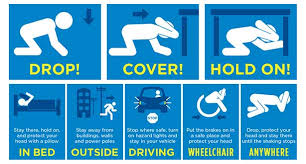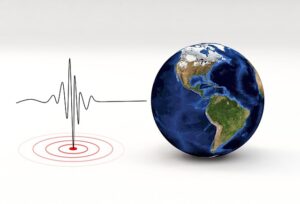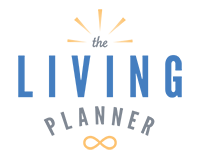April is National Earthquake Preparedness Month. On Monday, April 14th, Southern California had a wake-up call. The MyShake app went off 2-3 seconds before the 5.2 quake on the Elsinore fault struck.
FYI, the MyShake app is an earthquake early warning for residents of California, Oregon, and Washington. Here is the link to learn more: https://myshake.berkeley.edu/ Another resource for you is ECA Earthquake Country Alliance, a public-private partnership to improve preparedness.
The alert sounded. I hit the floor and covered my head underneath my countertop. The Drop, Cover, and Hold on drills prepared me to act instantly before things started flying! For those of you in other areas of the country/world, California is known for the San Andreas Fault.
The Elsinore Fault Zone, a major fault line in Southern California and part of the San Andreas Fault system, is in this area. It is one of the largest in southern California and, according to the Southern California Earthquake Data Center, has historically been one of the quietest. The last earthquake in this area greater than 5.2, according to the center, was a magnitude-6 earthquake in 1910.
Florida and North Dakota are the states with the fewest earthquakes. Antarctica has the least earthquakes of any continent, but small earthquakes can occur anywhere in the World. Earthquakes can happen anywhere without warning. Areas at higher risk for earthquakes include Alaska, California, Hawaii, Oregon, Puerto Rico, Washington, and the entire Mississippi River Valley.

Ways to Keep Safe
Our county emergency management department shares tips to keep safe no matter where you are when an earthquake hits.
Indoors
If you are indoors, stay there. Get under and hold onto a desk or table, or stand against an interior wall. Stay clear of exterior walls, glass, heavy furniture, fireplaces, and appliances. The kitchen can be a particularly dangerous spot with glassware and other breakables that can create hazards. If you are in an office building, stay away from windows and outside walls, and do not use the elevator. Check for fire or fire hazards. If you smell gas, shut off the main gas valve. If there’s evidence of damage to the electrical wiring, shut off the power at the control box.
Outside
If you are outside, stay outside, and stay away from buildings, utility wires, sinkholes, and fuel and gas lines.
The area near the exterior walls of a building is the most dangerous place to be. Windows, fireplace brickwork, facades, and architectural details are often the first parts of the building to collapse. Also, shaking can be so strong that you will not be able to move far without falling down, and objects may fall or be thrown at you. Stay away from this danger zone–stay inside if you are inside and outside if you are outside.
Once you are in the open, get down low (to avoid being knocked down by strong shaking) and stay there until the shaking stops.
Automobiles
If you are in a moving automobile, stop as quickly and safely as possible. Move your car to the shoulder or curb, away from utility poles and overhead wires, and under or overpasses. Stay in the car and set the parking brake. Turn on the radio for emergency broadcast information. A car may jiggle violently on its springs, but it is a good place to stay until the shaking stops. If a power line falls on the car, stay inside until a trained person removes the wire.
While driving after an earthquake, watch for hazards such as breaks in the pavement, downed utility poles and wires, rising water levels, fallen overpasses, and collapsed bridges.
Ready.gov has a page dedicated to earthquakes. Aftershocks can and do occur. For example, we had 10 aftershocks Monday the 14th.
They warn us about threats after an earthquake. There can be serious hazards after an earthquake, such as damage to buildings, leaking gas and water lines, or downed power lines. If you are in an area that may experience tsunamis, go inland or to higher ground immediately after the shaking stops. Avoid contact with floodwaters as they can contain chemicals, sewage, and debris.

Are you Prepared?
Earthquakes may not be a concern for you, I realize. Many of the same tips shared for earthquake preparedness can be applied to your overall living situation. The goal is to your safety and your readiness to come through surprises in life.
- Prepare for any disaster by safeguarding documents and valuables. Disasters can happen without notice.
- Make sure you’re prepared by documenting your property and ensuring that you have the insurance coverage you need.
- Sign up for warnings (I’ve added a PDF from FEMA!)
- Have a communication plan ready to go.
A comment shared with me this week has stayed with me. “Preparation helps us live longer and gives us better quality years.” I concur 100%!
During unusual or unexpected situations, if you’ve built up your response “muscle”, you have a practiced response to rely upon. Each occurrence highlights our readiness (or not).
I invite you to reach out to discuss your preparedness readiness. Send me an Email or Book Time with Lynn if you have any questions. For additional information about my work, check out @ The Living Planner or @ The Living Planner.
If you’re up for planning your life’s administrative side, consider my book as a resource. The Living Planner What to Prepare Now While You Are Living © Check it out HERE.
Quote for the week: “There’s no harm in hoping for the best as long as you’ve prepared for the worst.”– Stephen King.
Drop, Cover, and Hold On❣️ Lynn
#PlanfortheUnplanned #Can’tPredictCanPrepare

